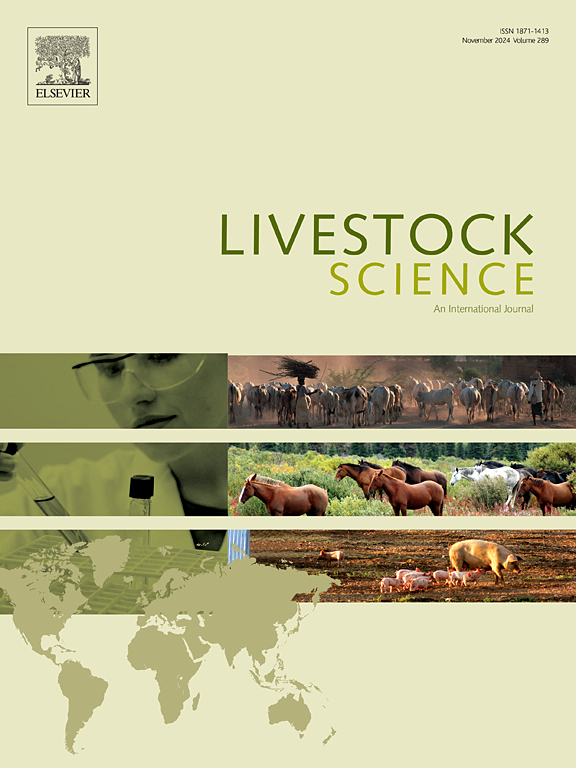兔子的乳头数:选择这一性状的可能性和益处
IF 1.9
3区 农林科学
Q2 AGRICULTURE, DAIRY & ANIMAL SCIENCE
引用次数: 0
摘要
本文综述了家兔泌乳数的分布、泌乳数与某些生殖性状的关系以及增加泌乳数选择的可能性和局限性。在许多哺乳动物物种中,人们已经观察到,出生的后代的数量通常是奶头数量的一半,或者最多等于奶头数量(“一半规则”)。虽然这条规则适用于欧洲野兔,但它不再适用于家兔。最常见的是8到10只,而杂交兔的产仔数通常在10到12只之间。出生时的奶头数与产仔数之间的相关性较弱,但3周时的奶头数与哺乳幼崽的存活率或产仔数之间的关系更为密切,特别是在产仔数大于10的情况下。8头和10头亲本后代的乳数分布证实了乳数的高遗传力。选择实验表明,增加平均乳头数和10个乳头的兔子比例是可能的,尽管11个或12个乳头的兔子很少出生。在选择母系时,应考虑产仔数以增加产仔数。在短期内,选择10个乳头的小母牛是有益的,因为它增加了哺乳期间小母牛的存活率,因为它们有更多的机会获得乳汁。从长远来看,这种选择性育种策略可以提高兔子种群的存活率和总体繁殖成功率。本文章由计算机程序翻译,如有差异,请以英文原文为准。
The teat number in rabbits: The possibility and benefits of selection for this trait
The purpose of the review is to present the distribution of teat number in rabbits, its relationship with some reproductive traits, and the possibility and limitations of selection for increasing teat number. In many mammal species, it has been observed that the number of offspring born is typically half as many or at most equal to the number of teats ("one-half rule"). While this rule holds true for European wild rabbits, it is no longer applicable for domesticated rabbits. Teat numbers most commonly range from 8 to 10, while litter size of hybrid rabbits typically fall between 10 and 12. A weak correlation was found between teat number and litter size at birth, but a closer relationship was observed between teat number and the survival of suckling kits or litter size at 3 weeks, especially in litters larger than 10. The high heritability of teat number was confirmed by the distribution of the teat number of the offspring from parents with 8 or 10 teats. Selection experiments have shown that it is possible to increase the average number of teats and the proportion of rabbits with 10 teats, although rabbits with 11 or 12 teats are rarely born. When selecting maternal lines, the number of teats should be considered to increase litter size. In the short term, selecting does with 10 teats is beneficial as it increases the chances of survival for kits during nursing, as they have more opportunities to access milk. In the long-term, this selective breeding strategy can lead to improved survival rates and overall reproductive success in rabbit populations.
求助全文
通过发布文献求助,成功后即可免费获取论文全文。
去求助
来源期刊

Livestock Science
农林科学-奶制品与动物科学
CiteScore
4.30
自引率
5.60%
发文量
237
审稿时长
3 months
期刊介绍:
Livestock Science promotes the sound development of the livestock sector by publishing original, peer-reviewed research and review articles covering all aspects of this broad field. The journal welcomes submissions on the avant-garde areas of animal genetics, breeding, growth, reproduction, nutrition, physiology, and behaviour in addition to genetic resources, welfare, ethics, health, management and production systems. The high-quality content of this journal reflects the truly international nature of this broad area of research.
 求助内容:
求助内容: 应助结果提醒方式:
应助结果提醒方式:


